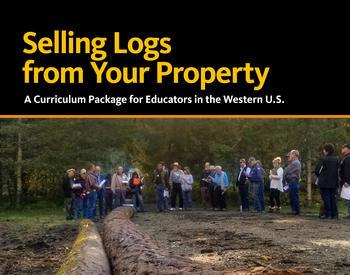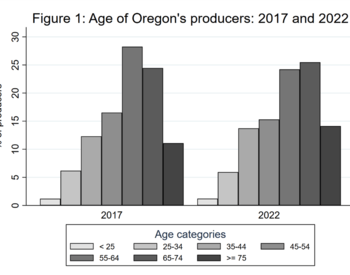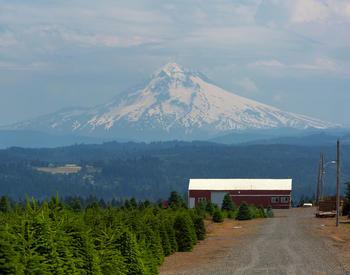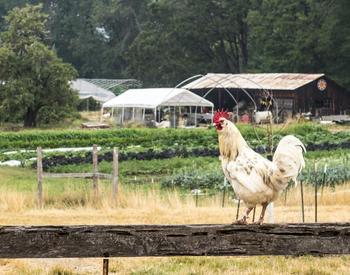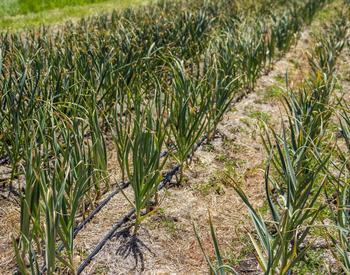Transcript
As Extension professionals, we have a unique opportunity to directly affect change within our communities. We take the research-based material and bring it to our communities in approachable and affordable ways. We have the ability to tailor our programs to the emerging needs within our communities. We find out about these from various ways, and most of those are just community conversations.
Whether you're at the grocery store or you're at the park with your kids you’re friends and neighbors with these people that you are serving. Those conversations about The Childcare Crisis might come up as needs in the community, programs that they think might be a great idea, or just struggles that they're having and I feel like constantly it's in the back of your mind.
You know, “how can we use our programs, and the services, and the research material that we have to solve this problem?” And, five years ago when I was pregnant with my first child that conversation got really loud. Parents came and they were talking to me about child care, early childhood opportunities, how difficult it was for them to find childcare for their families, and I knew that for myself too that that was a problem. Every place had waiting lists, and I knew that I needed childcare in order to work. That was something that my community needed, but I also needed data to support that in order to continue to do the work and and to feel that that was going to make a bigger impact. And lo and behold, large research bodies out there in the College of Public Health and Human Science were going out and finding that data for us.
Dr. Megan Pratt did research for mapping the child care deserts in Oregon, and that research article was one of the most impactful ones for voicing that need across the state. In fact, one of the pieces in there that is the most astounding to me is that every one of Oregon’s 36 counties is a childcare desert for infants and toddlers. And so what that means is that for every one spot available in regulated child care that three children are waiting for that spot, or in need of it. The need was there, it was clearly defined, and what were we doing to address it? At the time not very much. And so I went out and I saw who was doing the work. You know, we talked to foundations, I got myself on a steering committee.
OSU on your title kind of opens the doors for you to get in on these meetings and to meet these people doing the work. We brought in funding from the Ford Family Foundation and had a community conversation to find out what people's needs were, and what they really saw would benefit them in our community. And along the lines we saw gaps in the system. And one of those gaps that really stood out that I felt we could serve a need and build a program around was the childcare workforce. I’m also the 4-H Youth Development Program Coordinator for our county, and decided that a teen child care program would fit this need. And we went ahead and started that. Fast forward five years to a pandemic that we've been grossly underprepared Teen Babysitter Training for… what was a crisis in our communities has now seen exponential growth in the wrong direction. The child care crisis is impacting every family throughout the world.
The pressure to find care for young children while schools and daycares are closed has fallen on the shoulders of families, friends, and neighbors, many of which are teens. Historically I have offered an in-person teen babysitter training program in Hood River County. It was always met with positive response and as we entered a pandemic I realized that this program was more important now than ever before so I began converting it to an online platform. The response was overwhelming. Teens were not only interested, but they were eager for more information.
During the five-hour course teens learned everything from caring for children of various ages, to safety, nutrition, behavioral management, as well as starting their babysitter business. I decided to take my curriculum and my experience and share it with my colleagues statewide. In about a month, with the help of Sandra Carlson, 4-H educators across the state were teaching the course virtually. Throughout the summer and fall of 2020, 23 educators have trained over 200 youth from across the state. I have never been more proud as an educator, and our work as a team, as when my neighbor stopped by after I had just had my second child and told me that she just completed her babysitter training certification and would like to help me out. As a mother who needed help she had no idea of my connection to the program and I was so excited about the success of our Extension work. T
he Extension Service is here to serve local needs, to bring resources to our community, and to evolve as our community needs change. This babysitter training course will evolve as our needs change, and each community can adapt it to their specific situations. The reality is that many of our communities face very similar needs and as a statewide organization we have the opportunity to create programs that have tremendous impact when we work together as a team. The pandemic really did bring a critical mass towards these issues, and what we're seeing now is pretty unfortunate, actually. What was an issue long before this time is now magnified and those populations, those marginalized populations, that were dealing with this for probably decades, maybe longer, they're now going to start seeing movement and that's encouraging. And we're seeing that with a lot of social issues as well. As Danny said, we're better together as a statewide program, and these solutions make more sense when we all team up together and tackle the solution as a team. So, let's not wait until another pandemic hits to make this sort of shift happen. Go out there, see what those needs are, find out who's doing the work, and tailor your programs to meet those needs.
Across Oregon, there has been a long-standing lack of childcare availability. This inadequacy was magnified by the pandemic when many families found themselves without childcare for the first time.
This crisis has shed light on areas of society whose value plays a vital role in the economic health and stability within communities. It amplified existing issues from systemic racism, inadequacies in healthcare, in addition to a lack of quality, affordable, and accessible childcare. It also created opportunity to finally address these issues collectively.
Getting Oregon (and the nation) back to work, requires action and safe, creative solutions. Extension is uniquely poised to respond. Two counties in Oregon are actively working to create solutions within their communities.
Hear about Dani and Margie’s efforts with the Teen Babysitter Training Program and the Policy, Systems, and Environmental Change (PSE) model, working towards creating community-driven solutions and advocating for change.





